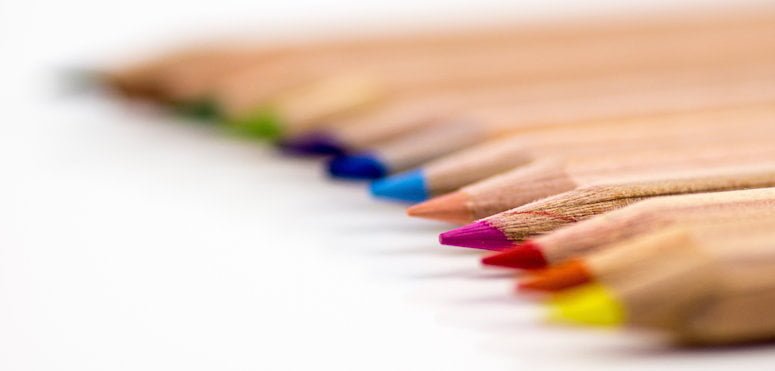2 -3 minute read.

Do you know the reason behind the specific colour palette chosen for your company’s branding? Maybe you’re the business owner and it was a personal decision. Maybe a vast department of creative marketing types sat around a glass-topped table and discussed emotions, moods and personality before a decision was made? Either way, someone had the final say and there was a reason behind it.
If you’re on the verge of a re-brand or are launching your first start-up, you might want to read on and discover how colour has subconscious associations and influences emotion before you opt for that neon yellow letterhead…
As a rule of thumb for business branding, choose two main, memorable colours. There’s a simple reason why companies, sports teams and schools use two colours: it’s easy to commit just two colours to memory.
So pick two main colours and use them consistently in everything you do. It’s only by using them time after time that they will begin to make an impact and be associated with your brand in the minds of your audience.
Your colour choice is a pivotal decision when it comes to your visual brand. It has the power to:
- Set the tone by choosing colours that show your brand personality
- Get a response by using colour in your calls to action
- Make your brand memorable … or not
The following list looks at the colours used by brands in their logos and the psychology behind them.
- Red: Aggressive, passionate, strong and vital. Grabs attention of viewers so is widely seen in many logos
- Pink: Feminine, innocent, soft and healthy. Is extensively used in logos related to spa, health care and cosmetic products
- Orange: Energetic, enthusiastic, flamboyant and attention grabbing. Gives a contemporary look
- Yellow: Optimism, positivity and buoyancy. Most difficult colour for the eye to take in however, so use is minimal
- Green: Calming, refreshing and conservative, signifying tranquillity, nature, health and freshness. Widely used in healthcare, construction, property and sporting logos
- Blue: Authority, dignity, security and faithfulness. One of the most popular corporate colours and extensively used in education, government and medial branding
- Purple: Royalty, luxury, wealth, spirituality and sophistication. Rarely used for branding
- Brown: Utility, earthiness, woodiness and subtle richness. Brown is used in logos relating to construction and development
- White: Peace, purity simplicity, sterility and refinement. Its frequent use in logos is due to its simplistic nature and radiant character
- Grey: Solid, intelligent, modest, practical, conservative and mature. Seldom seen in logos as it also represents old age, sadness and dullness
- Black: Powerful colour, evoking authority, boldness, elegance and style. It is broadly used in almost all types of logos for its boldness and sophistication.
What do you want to accomplish with your two main colours?
- Choose colours that are near each other on the colour wheel for a cohesive, serene look
- Choose colours that are opposite each other on the colour wheel for a high energy, vibrant look.
Here are some general guidelines to help get you started if you are still undecided:
- Light, bright, pale = energetic, friendly, open
- Dark, saturated = intense, corporate, serious
- Bright, intense = high energy, powerful
- Pure = child-like, unaffected, trustworthy
- Greyed-down = low-key, neutral, non-threatening.
What are you thoughts on this? Are there any obvious examples that don’t fit these “rules”? Why did you choose your colour scheme? Do you have any advice for people considering a business colour scheme update?
Do you need to outsmart your competitors? Contact us now to discuss what you need and how we can help you meet your goals.
Why not find out more about Business Vitamins,Strategic B2B marketing agency Suffolk…
